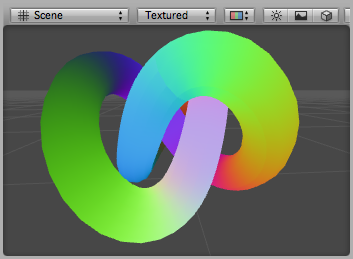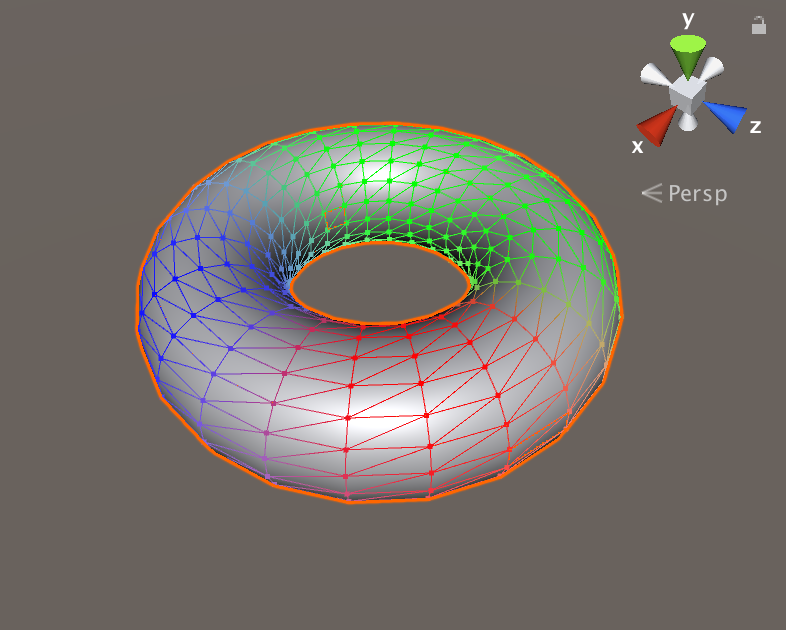Float4 UnityObjectToClipPos(float3 pos) 同次座標において、オブジェクト空間からカメラのクリップ空間へ点を変換します。これは、mul(UNITYMATRIXMVP, float4(pos, 1.0)) と同等に使用されます。 float3 UnityObjectToViewPos(float3 pos) 点をオブジェクト空間からビュー空間へ変換し. UnityObjectToClipPos(use float4 instead of float3) 3D scene need Linear but UI need Gamma; ComputeShader.SetFloats Convert URP template project to Hybrid Renderer V2 Tutorial; Awkward, but a cheaper option instead of hue shift shader; Difference between Step and SmoothStep; Blog Stats. So far we mostly used polygonal meshes to represent shapes. While meshes are the easiest to render and the most versatile, there are other ways to represent shapes in 2d and 3d. One way which is used frequently is signed distance fields(or SDF). Signed distance fields allow for cheaper raytracing, smoothly letting different shapes flow into each other and saving lower resolution textures for. You’ll notice that I have methods like UnityObjectToClipPos operating on the vertex position variable. Generally this would be in the vertex shader. If you put it (or other vertex shader methods) into the geometry shader, you have to take them out of the vertex shader. What to do in a Geometry Shader.
Unityobjecttoclippos Shader Graph

Summary 🔗︎
Sometimes you don’t have texture coordinates on your object, you want to make the Textures of multiple Objects align or you have a different reason to generate your own UV coordinates… In this tutorial we’ll start with the simplest way to generate your own coordinates, planar mapping.
This tutorial will build on the simple textured shader, but you can use the technique with any shader including surface shaders.
Unity Shader Float4x4
To make vertex shader run faster, Unity replaced it with UnityObjectToClipPos (float3 pos), which ignores w component even you pass a float4 position instead of float3. For some advanced users who still need the w component in their custom shaders, here is a cheaper UnityObjectToClipPos function which respects the w component!
Basics 🔗︎
We start by removing the uv coordinates from the input struct as we’ll generate our own texture coordinates.
Because UV coordinates can still be interpolated between the vertices like they were before, we calculate the new UVs in the vertex shader. As a start we can set the UV coordinates to the x and z values of the object coordinates. That’s enough to make the texture appear on our model and it looks like it’s pressed onto it from the top.
Adjustable Tiling 🔗︎
This doesn’t take the texture scaling into consideration and we might not want the texture to rotate and move with the object as it does now.
To fix the texture scaling and offset, we just put the TRANSFORM_TEX macro around the uv coordinates.
Texture Coordinates based on World Position 🔗︎
To take the object position and rotation out of the equation, we have to use the position of the vertex in the world (previously we used the position relative to the object center). To calculate the world position, we multiply the object to world matrix with it (I won’t go into matrix multiplication here). After we obtain the world position, we use that to set the uv coordinates.
As you see this technique has some disadvantages, mainly that it only works with tileable textures and the stretching on the sides, but that can be mitigated with some more advanced techniques like triplanar mapping which I’ll get into in a later tutorial.
You can also find the source code here https://github.com/ronja-tutorials/ShaderTutorials/blob/master/Assets/008_Planar_Mapping/planar_mapping.shader

Unityobjecttoclippos Cginc
I hope you enjoyed my tutorial ✨. If you want to support me further feel free to follow me on twitter, throw me a one-time donation via ko-fi or support me on patreon (I try to put updates also there, but I fail most of the time, bear with me 💖).
